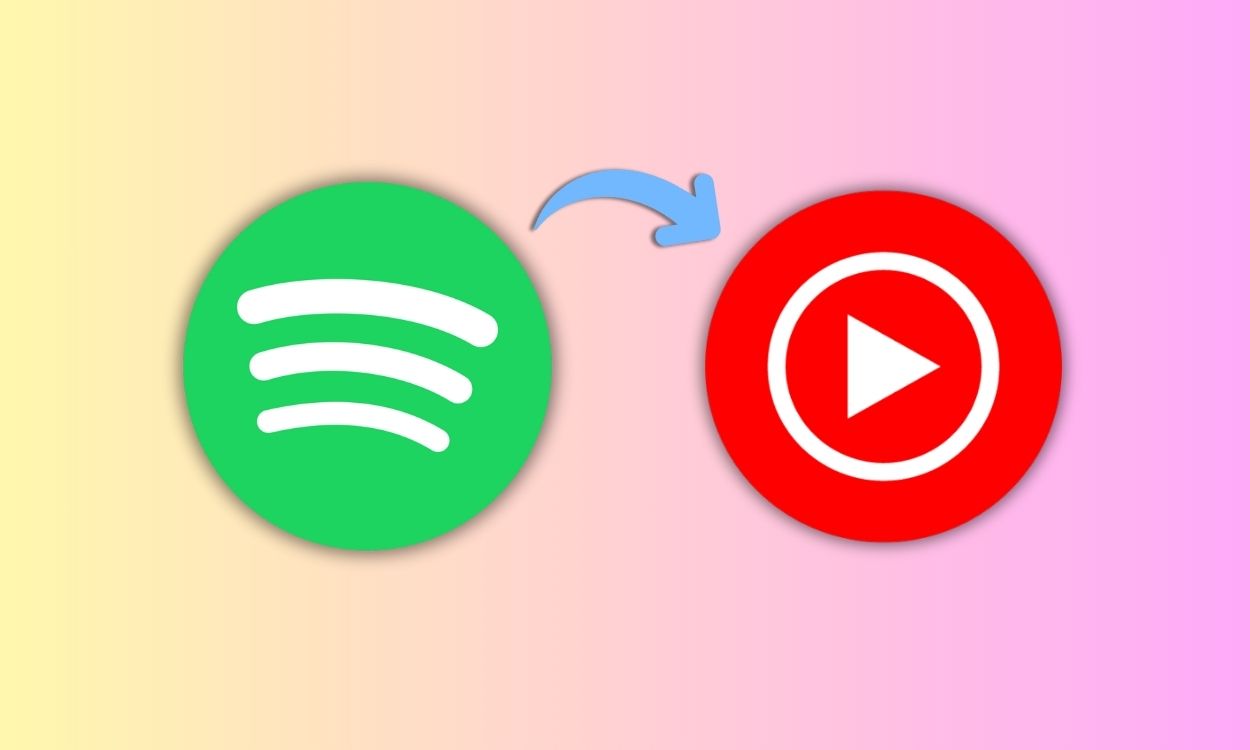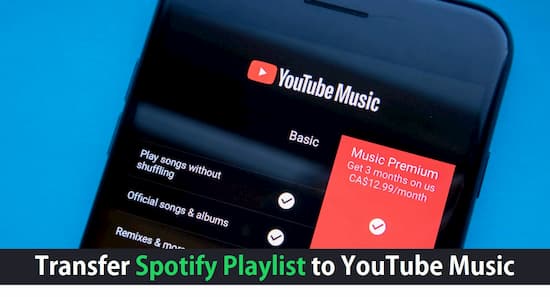If you’re a music lover, you probably have a mix of songs saved on YouTube and Spotify. While YouTube is fantastic for discovering new tracks and watching music videos, Spotify offers an incredible curated experience for listening. If you’ve ever wondered how to transfer your favorite tunes from
Why Transfer Songs from YouTube to Spotify?

There are several compelling reasons to consider transferring your songs from YouTube to Spotify:
- Curated Playlists: Spotify is known for its expertly curated playlists and personalized recommendations. By transferring your songs, you can easily integrate your favorites into these playlists.
- Offline Listening: Spotify Premium allows you to download songs for offline listening, which is a huge advantage when you’re on the go or in areas with limited internet access.
- Better Audio Quality: Spotify generally offers better audio quality compared to YouTube's streaming, especially for music tracks, enhancing your listening experience.
- Seamless Integration: If you use Spotify across multiple devices, transferring songs will allow you to have your entire music library at your fingertips, seamlessly synced across your phone, tablet, and computer.
- Music Management: Spotify’s interface is specifically designed for music management, making it easier to organize your songs, albums, and artists in a way that suits your listening habits.
Ultimately, transferring songs can help you streamline your music experience, allowing you to enjoy everything in one place without the hassle of switching between platforms. Plus, imagine having all your favorite tracks from YouTube, organized beautifully in your Spotify playlists!
So, are you ready to dive into the process? Let’s make it happen!
Also Read This: Why Does YouTube TV Keep Kicking Me Out? Causes and Solutions
3. Tools You Need for the Transfer

Transferring songs from YouTube to Spotify might sound daunting, but with the right tools, it's a breeze! Here’s a list of essential tools you'll want to consider:
- YouTube to MP3 Converter - This tool allows you to extract audio from YouTube videos and save it as MP3 files. Popular options include YTMP3 and 4K Video Downloader.
- Spotify Desktop App - You’ll need the Spotify app installed on your computer to easily import songs. Make sure it’s updated to the latest version for the best experience.
- File Management Software - Applications like iTunes or Windows Media Player can help organize your downloaded files and facilitate the transfer process.
- Third-Party Transfer Services - For some, using a service like Soundiiz or MusConv can simplify the process. These platforms can handle the transfer automatically, saving you time and effort.
Before you start transferring, ensure that you have all these tools ready. Each of them plays a crucial role in making the process smooth, whether you're converting audio files or managing playlists.
Also Read This: How to Share YouTube Videos to Instagram and Reach a Wider Audience
4. Step-by-Step Guide to Transfer Songs
Now that you have your tools lined up, let’s dive into the step-by-step process of transferring your favorite songs from YouTube to Spotify. Follow these simple steps:
- Find Your Favorite YouTube Songs: Start by browsing YouTube to find the songs you want to transfer. Make a list to keep track of them!
- Use a YouTube to MP3 Converter: Once you've identified the songs, go to your chosen YouTube to MP3 converter. Copy the URL of the YouTube video and paste it into the converter. Select the MP3 format and hit the convert button. Download the converted files to your computer.
- Organize Your Downloaded Files: After downloading, it’s a good idea to organize these MP3 files. Create a dedicated folder on your computer so that you can easily find your songs later.
- Open Spotify: Launch your Spotify desktop app. Make sure you're logged into your account. If you don’t have a Spotify account, you’ll need to create one!
- Add Local Files: In Spotify, go to Settings and scroll down to the Local Files section. Toggle on the option to “Show Local Files.” Click “Add a Source” and select the folder where you saved your MP3 files. Spotify will now display these songs in your library.
- Create a New Playlist: To keep things organized, create a new playlist in Spotify. Drag and drop your newly imported local files into this playlist. You can even mix them with your other favorite Spotify tracks!
- Sync with Your Mobile Device: If you want to listen to your new playlist on the go, make sure your Spotify app on your phone is connected to the same Wi-Fi network. Go to the playlist and tap on the download button to sync the songs.
And there you have it! With these steps, you can easily transfer your favorite songs from YouTube to Spotify, allowing you to enjoy your music wherever you are. Happy listening!
Also Read This: How to Block YouTube Ads on Roku: Tips for Ad-Free Streaming
5. Common Issues and Troubleshooting
Transferring songs from YouTube to Spotify can be a smooth process, but sometimes you might run into a few bumps along the way. Here are some common issues people face and how to troubleshoot them:
1. Songs Not Transferring:
Sometimes, certain songs just won’t make the jump from YouTube to Spotify. This could be due to copyright restrictions or the song not being available in Spotify’s library. If you encounter this, try searching for the song directly in Spotify to see if it's available under a different artist or album.
2. Error Messages:
If you receive error messages while transferring, double-check that you’re using a reliable transfer tool. Sometimes, simply refreshing the page or restarting the app can solve the problem. Also, ensure that your internet connection is stable.
3. Duplicate Songs:
After transferring, you might find duplicate songs in your Spotify library. This can happen if the tool used doesn’t recognize previously transferred songs. To clean up your library, consider creating a playlist and manually removing duplicates.
4. Missing Playlists:
Occasionally, entire playlists might not transfer over. If this happens, check if the transfer tool has a limit on the number of songs or playlists it can handle at once. You might need to split larger playlists into smaller chunks for a successful transfer.
5. Account Issues:
If you're having trouble logging into your Spotify account during the transfer, make sure you’re using the correct credentials. Sometimes, a simple password reset can do the trick. If you’re still having issues, try logging in on a different device to rule out device-specific problems.
Whenever you encounter an issue, don’t hesitate to consult the FAQs or customer support section of the transfer tool you’re using. They often have solutions for common problems!
6. Tips for Managing Your Spotify Library After Transfer
Once you’ve successfully transferred your favorite tunes from YouTube to Spotify, it’s essential to keep your library organized and manageable. Here are some tips to help you navigate your new Spotify library like a pro:
1. Create Playlists:
- Organize your songs into themed playlists, like “Chill Vibes,” “Workout Jams,” or “Throwback Hits.”
- Use the “Create Playlist” feature to curate collections that suit different moods or activities.
2. Use Folders:
If you have many playlists, consider grouping them into folders. While Spotify doesn’t have a built-in feature for this, you can create a folder structure on your computer or use a note-taking app to organize them virtually.
3. Follow Artists and Friends:
Stay connected with your favorite artists and friends by following them on Spotify. This way, you’ll be updated on new releases and discover music that fits your taste.
4. Explore Spotify’s Features:
Take advantage of Spotify’s features like “Discover Weekly” and “Release Radar.” These personalized playlists can introduce you to new music based on your listening habits.
5. Regular Cleanup:
- Make it a habit to review your library regularly. Remove songs or playlists that no longer resonate with you.
- Consider using Spotify’s “Your Library” section to quickly identify tracks you might want to keep or delete.
Managing your Spotify library doesn’t have to be overwhelming. With these tips, you’ll be able to enjoy your music collection fully and easily find what you’re looking for!
 admin
admin








